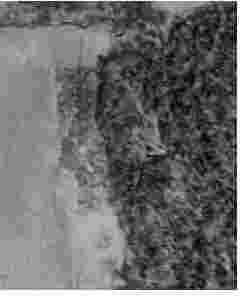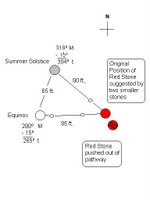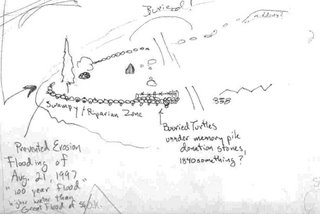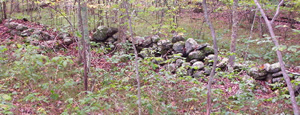
This is sort of a response to the Rock Piles post of Monday, November 06, 2006 that entitled "The Rock Pile Site Prediction Experiment," as well as a sort of request I keep making of my good friend and fellow "rock guy," that also goes out to those who read our pages here in Cyber Space. I'm always saying "It looks like a Turtle" most often but I also keep asking "What about that stone row behind the mound?"
I'm curious what that's connected to, if it's ancient, if it's Native made, if it makes sense in a sacred landscape, is a remnant of a higher degree of civilization that just doesn't seem to be recognised or accepted.
And of course to admit that I am also guilty of the same charge since I'm the person who just recently wrote this at this blog: "The zigzag rows are disturbed by the road but they continue to the south, concealed by brush.
And if I did follow them in the past, I don't remember well enough to tell you where they lead."
And I haven't gone back up to look either.
But I shall, in fact
will.
Soon.
Really.
So to start out, I guess I'd have to bring up something from the depths my memory, a sort of uncataloged museum where it's easy to get lost.
Some scientists from somewhere showed some Native American Elders some electron microscope photos and some telescope photos to get their reaction about the similarities between atoms and solar systems and galaxies (or something to that effect - the museum is not well lit either).
The Elders weren't very surprised; in fact they said something like "That's what we've been telling you people for a long time. We're glad you finally see. There may be some hope for you after all."
My friend Wendell Deer With Horns, who has wandered around with me to some of the sites I write about always says (as some archeologist shoots down a theory of mine - or refuses to listen - or accuses me of building all these miles and miles of stone rows and the "stone on stones" and all the other stuff) "They just don't see it's all connected."
I think it's an important perspective - and I'll use a couple spots as examples.
My "discoveries" go back to the burial grounds. Missing mounds now, but woodcuts and an ancient history document them; some of the stones turned into a property type stone fence, with posts and barbwire, running along north/south, probably by survey. But underneath is a serpentine row along where the river used to flow. A 100 yr. flood exposed more of it for a while, both sides of the stream stone lined/defined/managed (I'm not sure what term describes it best). When I followed those stone rows I came to the swamp that drains two different ways, that Tobacco Bear and other stones on stones in it.
I got to The Mound swamp because I followed the stone rows from the power line road, just like I followed many a stream with rows or rows across dry land.
I've got guesses about blueberries around it, fire maintained, stone row protected, but I think the swamp may have been burned too when conditions were dry perhaps, the rectangle that encloses the rows burned at some sort of time interval, the forest lands outside at other times, like the mast forest above my house.
(I should have links all this stuff, but I don't - not sure if I wrote it at my blog or Peter's or at Neara and I'm running over my self imposed time limit so I can
really get things done, so I leave it up to your memory or search capabilities until a later date.)
So I wonder if those mounds you (and everyone else) are finding are in some sort of space defined by stone fences, for maintenance purposes, particularly by Native Use of Fire, capitalized because of it's widespread use for a very, very long time on Turtle Island.
And it's sort of part of the Connectedness thing, links to earth and sky and and people and trees and animals and stones and the Great Turtle and the Great Mystery.
So, yes I agree that water is important and is a great clue, but don't forget those stone rows - and what Wendell says about everything being connected.










